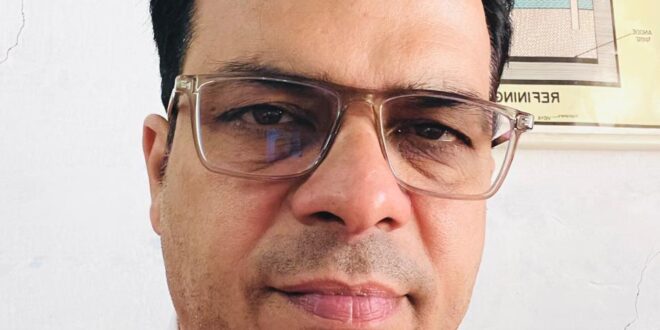By Bharat Pandey, Ranikhet
India is called the land of villages. Even today, a large part of the population lives in rural areas.
Life in villages is simple, close to nature, and full of traditions. But in the modern world, progress is not
possible without science. For a long time, science and technology were seen only in cities—in schools, industries,
and laboratories. Now the time has come when science is entering villages too, slowly but surely, and it is bringing
big changes in the lives of the people.
If we look at today’s villages, we can see both tradition and modern science walking together. A farmer may still
use his plough in the fields, but he also uses a mobile phone to know the weather. A student may still sit on a bench
in a simple classroom, but sometimes a projector or tablet is also there to teach him in a new way. This mixture of
old and new shows us that science is finding its place in rural India.
The biggest impact of science in villages is seen in farming. Farming is the main work of rural people. In the past,
farmers depended only on rainfall and their experience. Today, with scientific help, they test the soil, use good
quality seeds, and adopt new methods like drip irrigation. Drones are being used to check crops, and machines are
helping to save time and energy. These changes help farmers grow more food and earn better income. When science
supports farming, it not only improves crops but also gives confidence to farmers for a better future.
Health is another area where science has helped villages. Earlier, people had to travel far to towns for treatment.
Many small illnesses became big because of late care. Now, with mobile health vans, telemedicine, and village health
workers, treatment is reaching closer to homes. Vaccines have saved many lives. During the recent pandemic, it was
science that gave protection to villagers through medicines, masks, and vaccines. Science has become a shield of
safety for rural families.
Education in villages is also changing. Schools in rural areas were once limited to blackboards and books. But science
has brought smart classes, online lessons, and e-learning. Some children now attend online classes on their phones.
They can see pictures, videos, and animations that explain lessons in a better way. This gives them confidence and
makes learning more interesting. With proper support, village children can achieve the same success as city children.
Energy is another gift of science to rural life. Earlier, many villages had no electricity. Evenings were dark and
children found it difficult to study at night. Today, with solar panels, biogas, and small windmills, villages are
getting light and energy. These methods are clean, cheap, and useful for daily needs. Science has shown that villages
can also be energy independent without harming the environment.
Water has always been a serious problem in villages. Many places face drought, while others waste rainwater. With the
help of science, villagers are now using rainwater harvesting, drip irrigation, and water recycling. These methods save
water and help in farming as well as daily life. With science, water problems can be reduced and life in villages can
be made easier.
Communication is the area where science has made the biggest difference. Earlier, sending a letter took weeks. Now,
with mobile phones and the internet, villagers can talk instantly with anyone. Farmers can check market prices before
selling crops. Students can search for study material online. Traders can sell products in bigger markets. Women can
do online banking from their homes. The internet has opened a door of opportunities for rural people.
Still, some challenges remain. Not every villager knows how to use modern tools. Many do not have enough money to buy
machines or access fast internet. Sometimes, even if new technology is given, it is not used properly because there is
no training. So along with science, awareness and education are also needed. Villagers must be taught how to use these
new tools in simple ways.
The most beautiful part is that science is not destroying traditions in villages. People still celebrate festivals,
sing folk songs, and respect nature. At the same time, they use solar lamps, weather apps, and medical kits. Science
and tradition are living together. This balance makes villages special.
If India wants to become truly self-reliant, then villages must grow with the help of science. Villages have the people,
the land, and the strength to build the nation’s future. Science can guide this strength in the right way. Science is not
only about machines and inventions. It is about thinking, questioning, and improving life. When villagers adopt this way
of thinking, they will be able to face any challenge.
The future of rural India can be very bright with science. We can imagine villages with clean energy, safe drinking
water, good healthcare, and modern education. Farmers will use new methods, children will learn through digital tools,
and families will live healthier lives. This future is not far—it is already beginning.
Science in villages is not just about comfort. It is about hope, progress, and dignity. It is about giving equal chances
to people, no matter where they live. Villages are not behind; they are moving forward, step by step, with the light of
science guiding their path. In the heart of rural India, science is not just a tool—it is a promise of a better tomorrow.
 National Warta News
National Warta News





